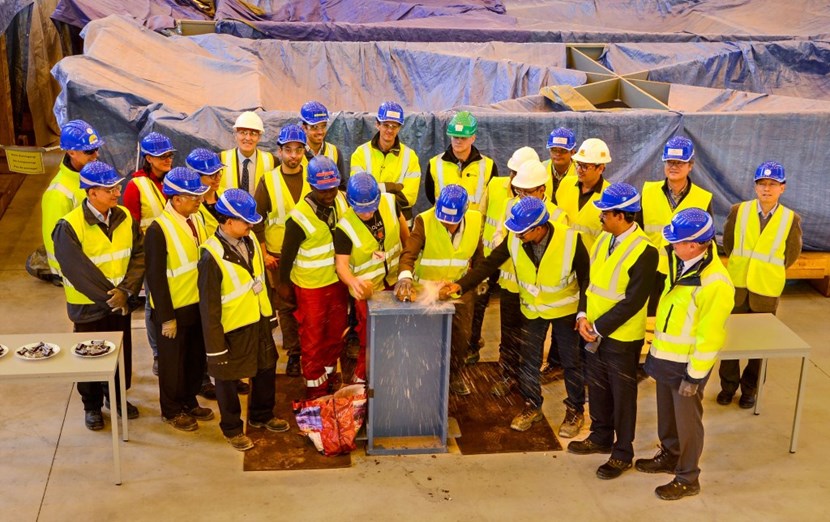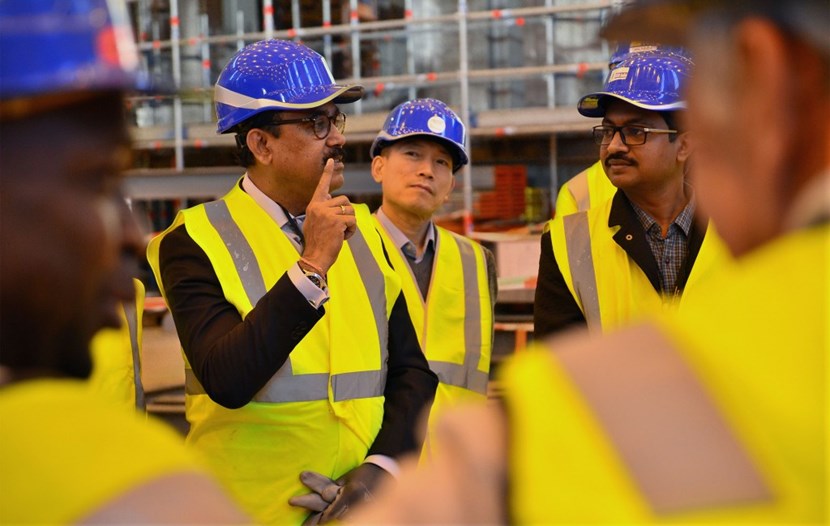ITER NEWSLINE
-
Cryostat base
And now tier two
Cryostat base | And now tier two
Nothing gives a better sense of the size of the ITER machine than the ongoing works in the Cryostat Workshop.

Breaking coconuts and sharing their flesh before any event of importance, whether a wedding, a journey or a construction project, is an Indian tradition. It is supposed to remove the hurdles from the path of our human endeavours.
There, in this Indian enclave within the ITER international territory, the first sections of the steel cylinder that will contain the machine—the cryostat—are progressively taking shape.
This
massive component, 30-metres high, 30 meters in diameter and a total weight of 3,850 tonnes, comprises four different sections: base, lower cylinder, upper cylinder and lid.
Although it is pierced by more than 200 penetrations, some as large as four metres in size, the cryostat is a leak-tight vacuum container that will act as a thermos to insulate the ultra-cold superconducting magnets from the outside environment.
It is assembled and welded on site from 54 segments manufactured in India. Segment
delivery began two years ago, in December 2015.

Arunkumar Srivastava, who will take up his duty as Chair of the ITER Council in January, participated in the visit along with ITER Director-General Bernard Bigot.
As of today, the first tier of the base section is finalized and welding operations are ongoing on the first tier of the lower cylinder.
On November 16, a traditional "coconut ceremony," took place to herald the start of welding operations on the base section tier two—a 750-tonne sub-component whose pedestal will support the combined mass of the Tokamak and cryostat (25,000 tonnes) and handle the forces resulting from the vacuum's compressive loads, from thermal loads originating in the cooling system and from potential seismic events.
"Tier two of the cryostat base is particularly challenging to assemble and weld," explains Anil Bhardwaj, a mechanical engineer in ITER Vessel Division. "The plates it is assembled from vary from 50 to 200 millimeters in thickness and tolerances are very precise, as its surface will be used as reference for the installation of the vacuum vessel and magnets."
return to the latest published articles








